Power, prestige, and the politics of gold
Being in Paris this early spring brought me a wondrous, gilded experience at the Musée du Quai Branly-Jacques Chirac.
The exhibition was a dazzling journey through time—gold has crossed countries and cultures for centuries. From the deserts of North Africa to the temples of Japan, it explored how gold and textiles have been intertwined for thousands of years. Ancient civilizations—Roman, Byzantine, Persian, Chinese, Indian, and others—crafted cloth where gold threads danced with silk and linen. Think golden robes for kings and sacred garments glittering with meaning. Highlights included Indian chaogoshia and Chinese qipao wedding gowns.

To offer a contemporary perspective, Chinese designer Guo Pei was invited to present several of her creations. Her couture pieces were like myths stitched into fabric—bridging centuries-old techniques with avant-garde vision. These breathtaking gowns illustrated how art and culture continue to shape fashion. Several were interspersed throughout the exhibition, shimmering between past and present.
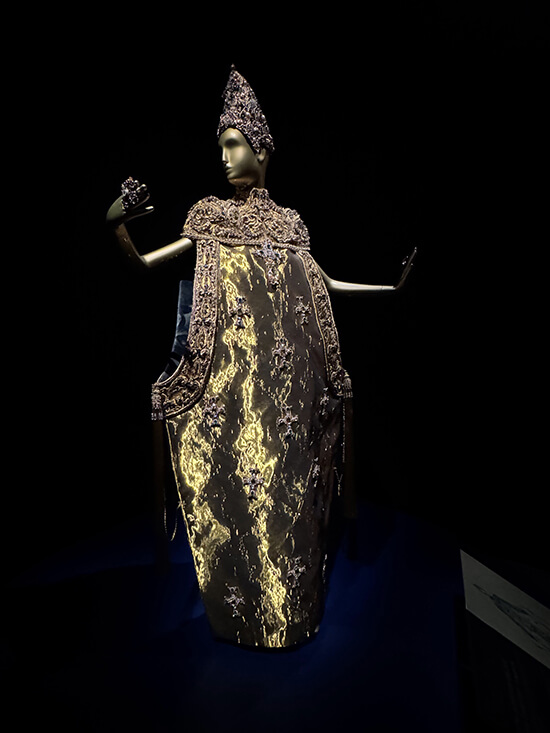
The show closed with a tribute to the exquisite embroidery of Maison Lesage, the legendary French atelier that has collaborated with couturiers for over a century.
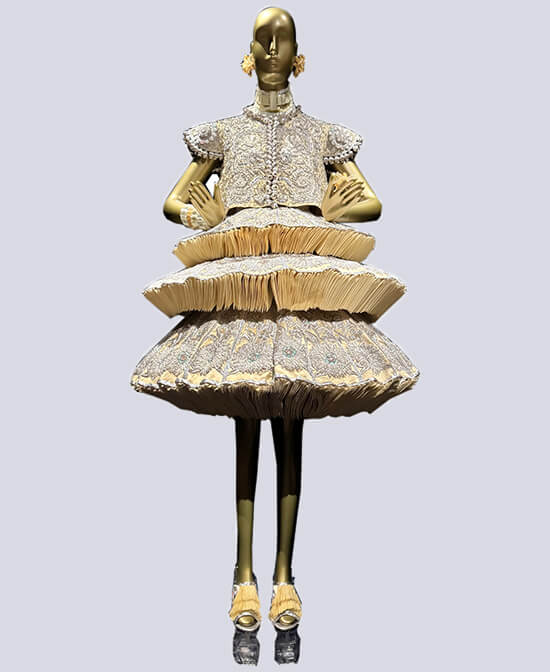
Gold isn’t just about wealth and power—it speaks of artistry, identity, and desire. For nearly 7,000 years, its glow has mesmerized humanity. Warriors, emperors, and artists have all chased its shimmer—spinning it into stories through textiles, not just jewels or weapons.
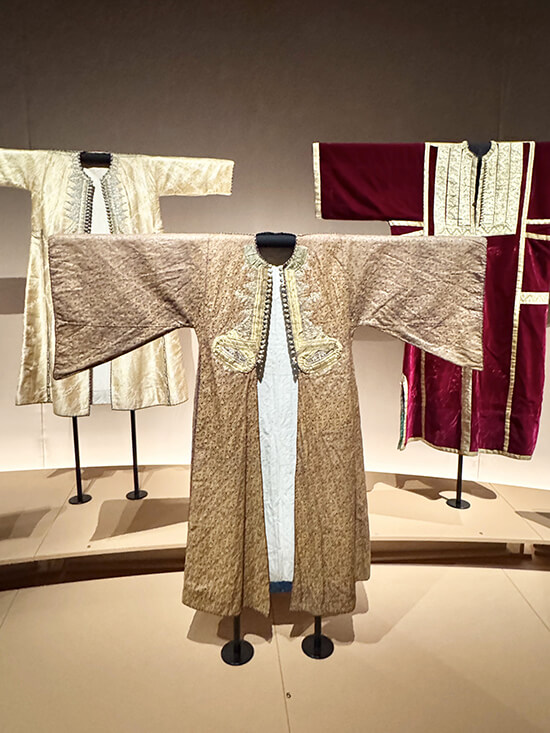
It felt like stepping into a glowing, living tapestry of cultures and craftsmanship. If you’re drawn to fashion, history, or inspiration, you must see this.
Back in Manila, I traveled to Kalibo to visit our indigenous weavers. Watching our living tradition in motion was deeply moving. With care and devotion, our artisans also work with glitz and gild—metallic threads in silver and gold—infusing heritage with brilliance. Surely, Filipino weavers were part of the ancient tradition of weaving with gold. Through time and challenge, they continue to uphold their artistry with pride and purpose.
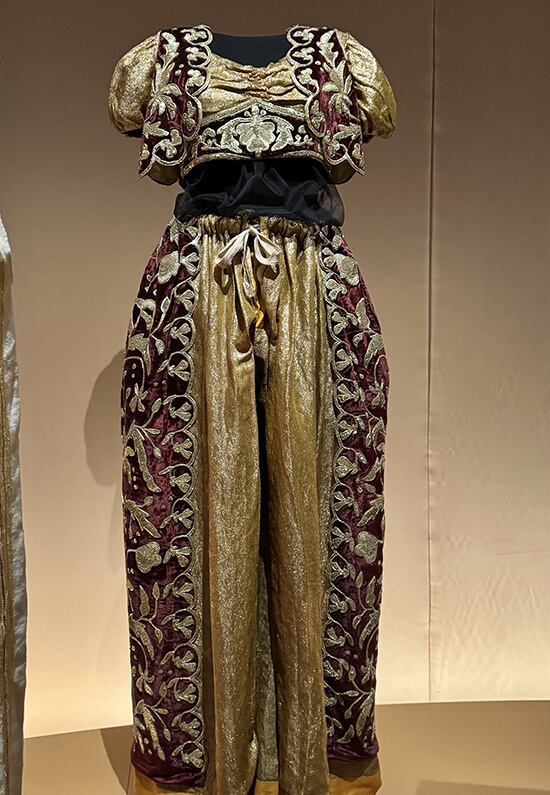
Garments of culture and prestige
The Maghreb is the northwestern region of Africa encompassing Algeria, Libya, Morocco, Mauritania, and Tunisia. After the Arab conquest in the 7th century, North Africa embraced the rich textile arts of the Muslim East. The Fatimids and, later, the Almohads supported the production of gold and silk fabrics in royal workshops.
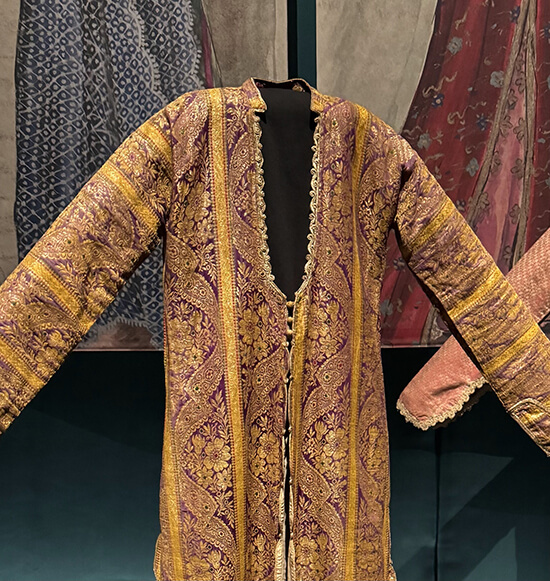
Between the 15th and 17th centuries, exiled artisans from Spain revitalized Maghrebi craftsmanship. Women’s garments blended Andalusian elegance with Ottoman influences, using gold thread to express status and beauty.
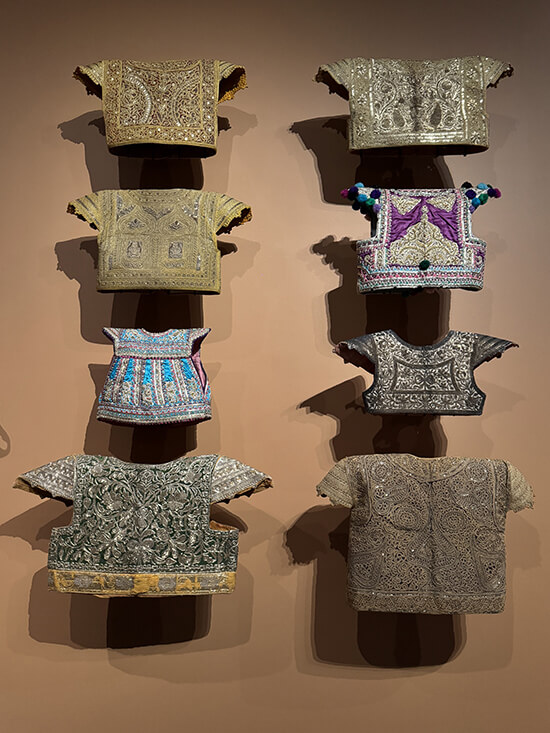
From the 11th to 16th centuries, Morocco flourished under dynasties that ruled both North Africa and Muslim Andalusia. After the 1492 expulsion from Spain, many Muslims and Jews settled in Morocco, bringing with them Andalusian dress traditions. By the 18th century, the caftan, paired with a silk velvet belt, became a symbol of Moroccan refinement.

In Tunisia, under the Hafsid dynasty (1229–1547), Tunis became a cultural hub enriched by Andalusian scholars. In 1609, expelled Moriscos from Spain were welcomed and helped revive artisanal industries, including gold-embellished silk. By the 18th century, elite women wore opulent ensembles that combined Turkish caftans, vests, and Granadan trousers.

Between the 14th and 15th centuries, a sleeveless tunic dress called the djoubba was favored by wealthy women in Constantine and across the Ottoman Empire. In the late 19th century, its shape was influenced by French fashion, flaring out at the bottom.

In India, a ceremonial ensemble woven for weddings or engagements typically included a short-sleeved dress, a long-sleeved tunic, and a stole —each piece richly brocaded. In China, women’s theatrical armor was embroidered with silk, gold, and silver threads using a couching stitch, often adorned with mirrors, glass beads, and tassels. In Peking Opera, costumes feature symbolic details—five-clawed dragons and large medallions suggest courtly or imperial rank during the Qing dynasty (1644–1912).
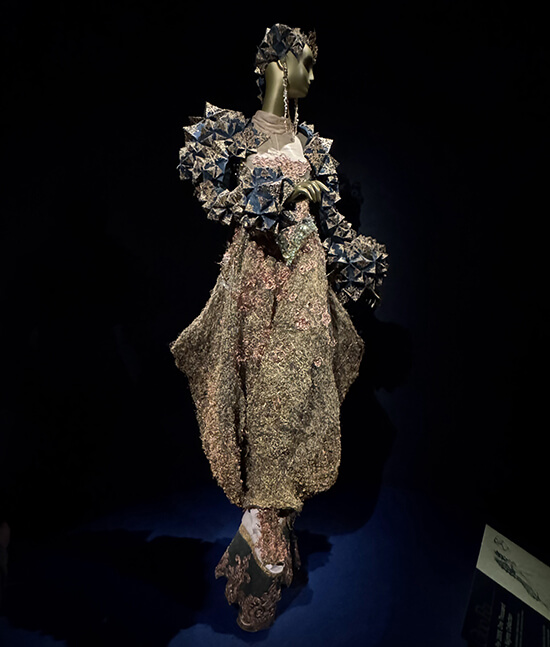
In Southeast Asia, hand weaving has long been integral to textile culture. Gold, once a common material in weaving, has been replaced today by metallic yarns, but the spirit of luxury and cultural expression remains.


